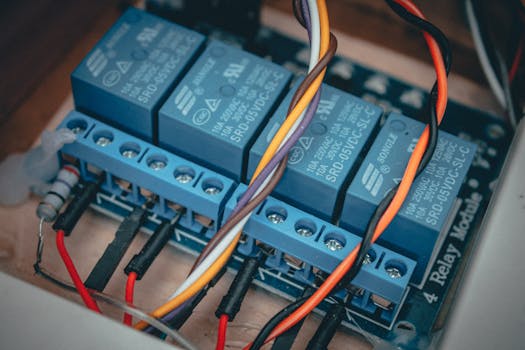
Raspberry Pi has enjoyed a dominant position in the single-board computer market for years. But a new partnership between Qualcomm and Arduino is poised to shake things up. What does this mean for the future of DIY electronics and the Raspberry Pi's reign?
Qualcomm & Arduino: Raspberry Pi's New Rival?
For years, the Raspberry Pi has reigned supreme as the go-to single-board computer (SBC) for hobbyists, educators, and developers alike. Its affordability, versatility, and vibrant community have made it a cornerstone of the DIY electronics world. But that dominance might be facing a serious challenge. The recent collaboration between Qualcomm and Arduino to create new development boards powered by Qualcomm's chips signifies a potential shift in the landscape.
The Power of Qualcomm: A New Contender Enters the Ring
Qualcomm, a name synonymous with mobile processors and wireless technology, brings significant firepower to the table. Their Snapdragon processors are known for their performance, power efficiency, and integrated features like Wi-Fi, Bluetooth, and cellular connectivity. This contrasts with the Raspberry Pi, which often relies on separate modules for these functionalities. The partnership with Arduino, renowned for its user-friendly ecosystem and vast library of code, creates a compelling alternative for makers and developers.
Snapdragon vs. Broadcom: A Performance Showdown
The Raspberry Pi typically uses Broadcom chips, which are reliable but sometimes lag behind in terms of raw processing power compared to Qualcomm's Snapdragon offerings. Qualcomm's chips often boast superior graphics processing units (GPUs) and neural processing units (NPUs), making them ideal for applications like computer vision, machine learning, and augmented reality. This could open up new possibilities for projects that were previously difficult or impossible to achieve on a Raspberry Pi.
Example: Imagine building a drone with advanced object recognition capabilities. A Qualcomm-powered Arduino board could potentially offer significantly better performance and battery life compared to a Raspberry Pi-based solution.
Integrated Connectivity: A Step Up for IoT
One of the key advantages of Qualcomm's chips is their integrated connectivity. Many Snapdragon processors include built-in Wi-Fi, Bluetooth, and even cellular capabilities. This simplifies the development process and reduces the need for external modules, making projects more compact and power-efficient. This is particularly beneficial for Internet of Things (IoT) applications where connectivity is paramount.
Tip: When considering a project that requires reliable and energy-efficient wireless communication, explore Qualcomm-based Arduino boards for a simplified and potentially superior solution.
Arduino's Ecosystem: Bridging the Gap for Makers
Arduino's strength lies in its accessibility and ease of use. Its intuitive IDE (Integrated Development Environment) and extensive library of code make it easy for beginners to get started with electronics programming. The partnership with Qualcomm allows Arduino to leverage its existing ecosystem to support the new Snapdragon-powered boards, making them more accessible to a wider audience.
Simplifying Complex Tasks: Code Libraries and Community Support
Arduino's vast library of code provides pre-built functions and examples for a wide range of tasks, from controlling LEDs to reading sensor data. This significantly reduces the amount of code that developers need to write from scratch, accelerating the development process. The active Arduino community also provides a wealth of support and resources, making it easier to troubleshoot problems and learn new skills.
Example: If you want to build a smart home sensor that monitors temperature and humidity, you can likely find pre-written code libraries for both the sensor interface and the Wi-Fi connectivity on the Arduino platform.
A More Streamlined Development Experience
By combining Qualcomm's powerful hardware with Arduino's user-friendly software and community support, the partnership aims to provide a more streamlined development experience for makers and developers. This could attract new users to the world of embedded systems and accelerate innovation in various fields.
What This Means for Raspberry Pi
The arrival of Qualcomm-powered Arduino boards doesn't necessarily spell doom for the Raspberry Pi. The Raspberry Pi still holds several advantages, including a lower price point for some models and a more established software ecosystem for certain applications. However, the competition from Qualcomm and Arduino will likely push the Raspberry Pi Foundation to innovate and improve its products.
Increased Competition: Innovation and Price Wars
The increased competition in the SBC market is ultimately beneficial for consumers. It forces manufacturers to develop better products at more competitive prices. We can expect to see both Qualcomm/Arduino and Raspberry Pi introducing new boards with improved performance, features, and software support in the coming years.
Tip: Keep an eye on the specifications and pricing of different SBCs to determine which one best suits your specific project requirements. Don't be afraid to experiment with different platforms to find the one that you enjoy working with the most.
A Diversified Landscape: More Choices for Developers
The introduction of Qualcomm-powered Arduino boards will likely lead to a more diversified landscape in the SBC market. Developers will have more choices to choose from, allowing them to select the platform that best meets their specific needs and budget. This will foster innovation and lead to the development of new and exciting applications.
Conclusion: A Bright Future for DIY Electronics
The partnership between Qualcomm and Arduino is a significant development that could reshape the single-board computer market. While the Raspberry Pi remains a powerful and versatile platform, the arrival of Qualcomm-powered Arduino boards offers a compelling alternative for makers and developers seeking higher performance, integrated connectivity, and a streamlined development experience. The increased competition will ultimately benefit consumers and drive innovation in the exciting world of DIY electronics.
